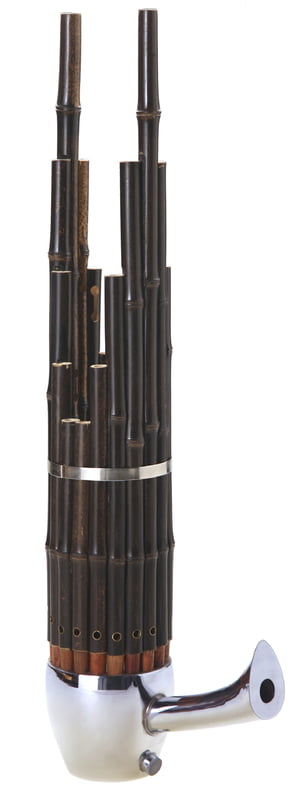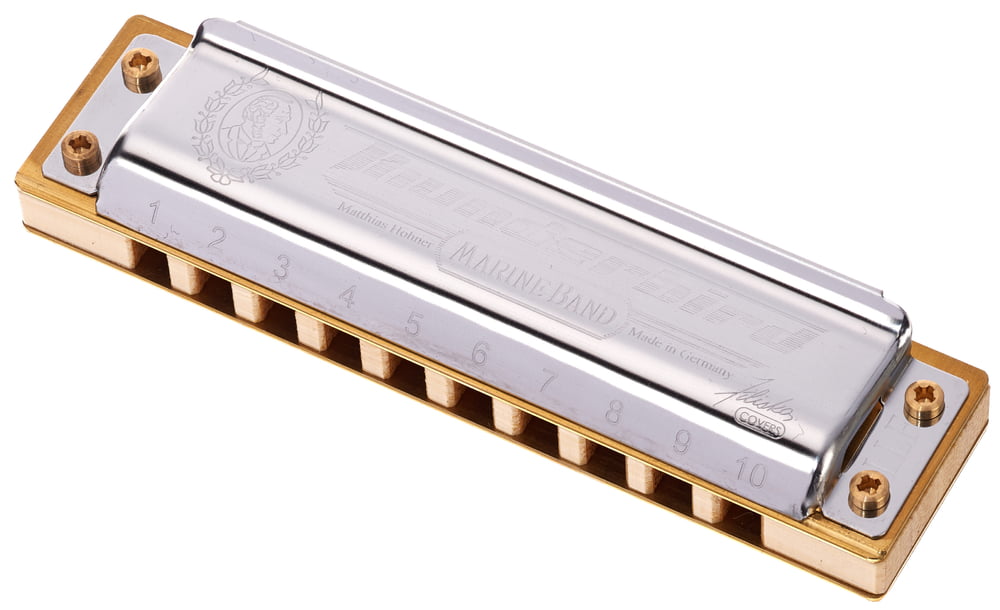2. History

The harmonica is a free reed instrument, which means that the reed that makes the sound vibrates freely when you blow or draw. (Draw means suck, but its a better word to describe what you have to do, as you will see). In other reed instruments, like clarinets or saxophones, the reed vibrates against a surface. This freedom of movement gives the harmonica some of its unique qualities.One of the earliest known free reed instruments is the sheng, a bamboo device that was played more than 5,000 years ago in China. The name means sublime voice and examples are still played in China and Thailand. But, as far as we know, it was not until the 19th Century that an instrument using free reed principles was made in Europe.
At least nine different people have been credited with inventing the harmonica. Christian Friedrich from Berlin is believed to have pioneered the idea in 1821, but the invention is also often attributed to a young clockmaker named Christian Buschmann. Whoever it was, the idea quickly spread and mundharmonikas, or mouth harps, were soon being made in several European centres. These early instruments were still very different to the harmonicas we know today.
Between 1845 and 1865, the harmonica began to standardize on four distinct types; the Viennese Octave and Tremolo models, the Knittlinger, and the Richter. In 1896, however, the true seed of worldwide success for the harmonica was sown. Matthias Hohner, who had bought a harmonica from a friend of Buschmann, created the Hohner Marine Band, a diatonic harmonica of the Richter type. The Marine Band was to become one of the most important instruments in the history of modern popular music.
Hohner shipped some Marine Bands to the United States, where they became popular among the country musicians in the South. In turn, the newly-emancipated black workers began to explore the musical possibilities of this highly portable, inexpensive instrument. They quickly discovered its ability to cry and wail, and to play the microtones that were part of the African-American musical heritage. It was also the perfect partner for the fiddles and slide guitars that were already being used to make the music that became the blues. By the 1930s, the harmonica was established as a virtuoso instrument among blues players, and the first true harmonica star, John Lee Sonny Boy Williamson, was making hit records in Chicago.

The invention of the chromatic harmonica, took the harmonica into the world of jazz, and even into orchestral concert halls. It allowed every note of the chromatic scale to be played without having to bend notes or change instruments, and Larry Adler became recognised as its finest exponent. Then in the 1960s, the sound of John Lennons harmonica on Love Me Do and Please Please Me launched The Beatles to pop superstardom, while Bob Dylans plaintive harmonica tones added unique power to songs such as Like A Rolling Stone and Just Like A Woman.
Today, virtuosos like Rod Piazza and Kim Wilson are still expanding the possibilities of the blues harmonica - or blues harp, as it is best known - while Howard Levy has stretched the capabilities of the humble Richter diatonic harp to new levels, with his remarkable overblowing technique. With almost 200 years of history behind it - or 5,000, if you are a sheng player - the harmonica has still got an exciting future. Especially if you start playing...
Your Contacts
Product Highlights
-
Chromatic Harmonicas
-
Diatonic Harmonicas
-
Octave Harmonicas
-
Tremolo Harmonicas
-
Microphones for Harmonicas
Recommended categories
Do you like what you're seeing?






